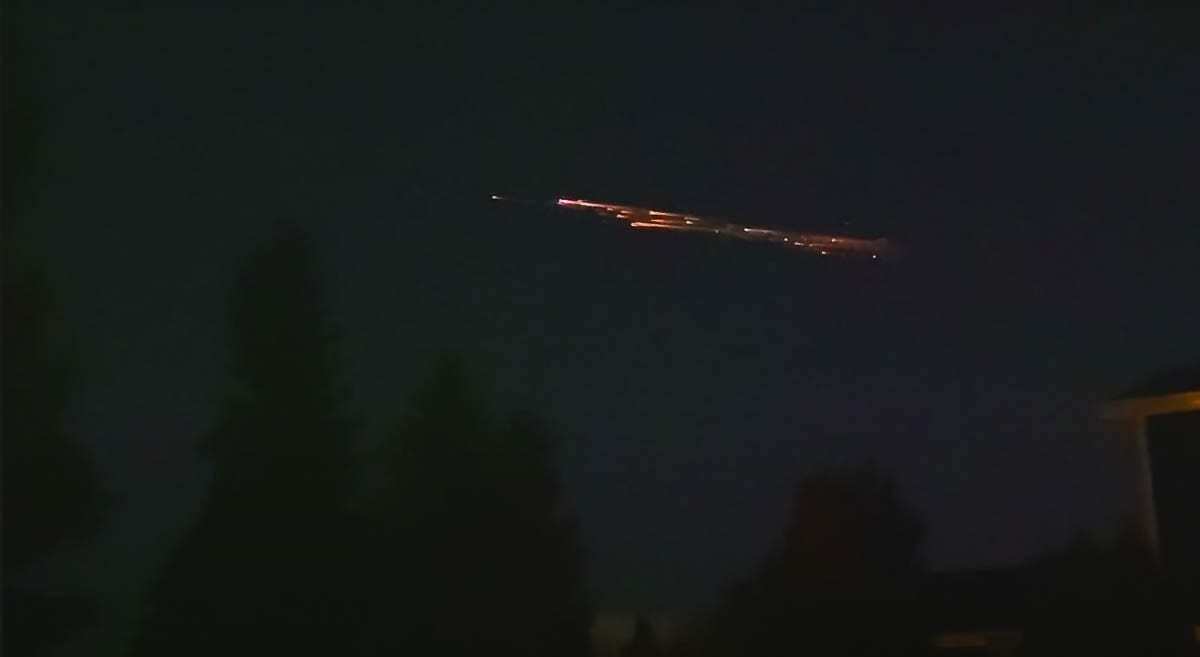The Falcon 9 engine burned up in the atmosphere after 22 days in orbit
Social media lit up around 9 p.m. on Thursday evening as hundreds of people across the Pacific Northwest spotted a long trail of debris burning up in the atmosphere overhead.

People across Clark County, from Camas to Salmon Creek, reported hearing a loud boom that shook homes, likely a sonic boom caused by the debris breaking the sound barrier as it entered the atmosphere.
The lights, which burned for nearly half a minute, were visible from the Puget Sound area south to Salem, prompting speculation over whether it was a meteor that had broken up in the atmosphere, strange fireworks, or something else.
Dr. James Davenport, research assistant professor of astronomy at the University of Washington, confirmed to KING 5 News in Seattle that the debris was from a 2nd stage engine of a Falcon 9 rocket that launched March 4, carrying Starlink satellites for SpaceX.
During a normal launch, the engine segment would be “deorbited,” bringing it down more quickly and over the ocean south of Australia. In this case, the deorbiting maneuver failed to launch, leaving the engine in orbit for 22 days before it burned up in the atmosphere approximately 30 miles above the Pacific Northwest.
Astronomer Jonathan McDowell with the Center for Astrophysics said it was unlikely any substantial debris could make it to the ground, and no reports of damage have been made.
On Twitter, McDowell noted that this is the 14th piece of space junk with a mass over one ton to reenter earth’s atmosphere this year, for an average of about one per week.
The Falcon 9 engine was likely traveling at approximately 17,000 miles per hour at the time it hit the earth’s atmosphere, said McDowell, and burned up well above the height at which airplanes fly.
McDowell also noted that the engine had been visible over Texas and southern California earlier in the evening during previous orbits, but due to weather in the upper atmosphere and the speed the debris was traveling, scientists could only guess when it would enter the atmosphere with about a five hour window of certainty.




